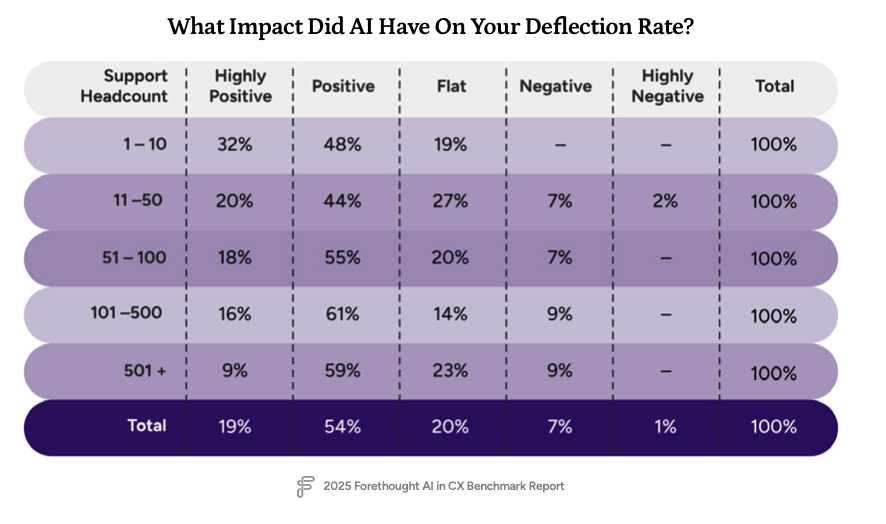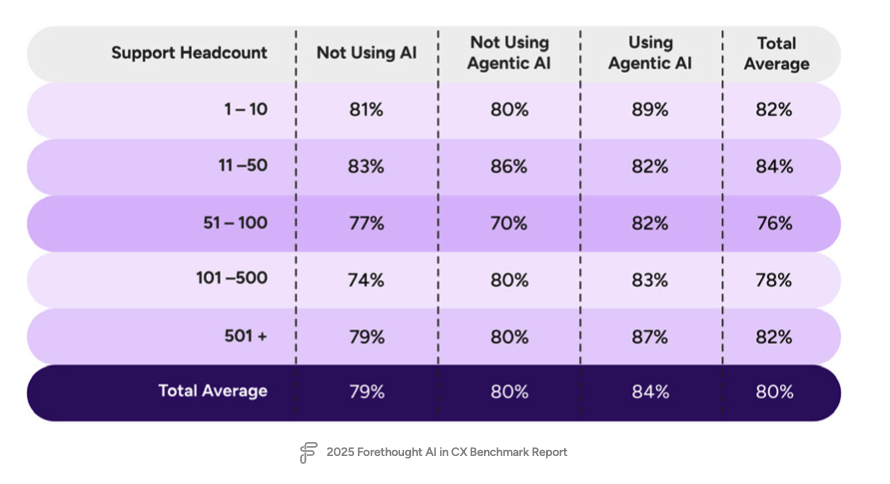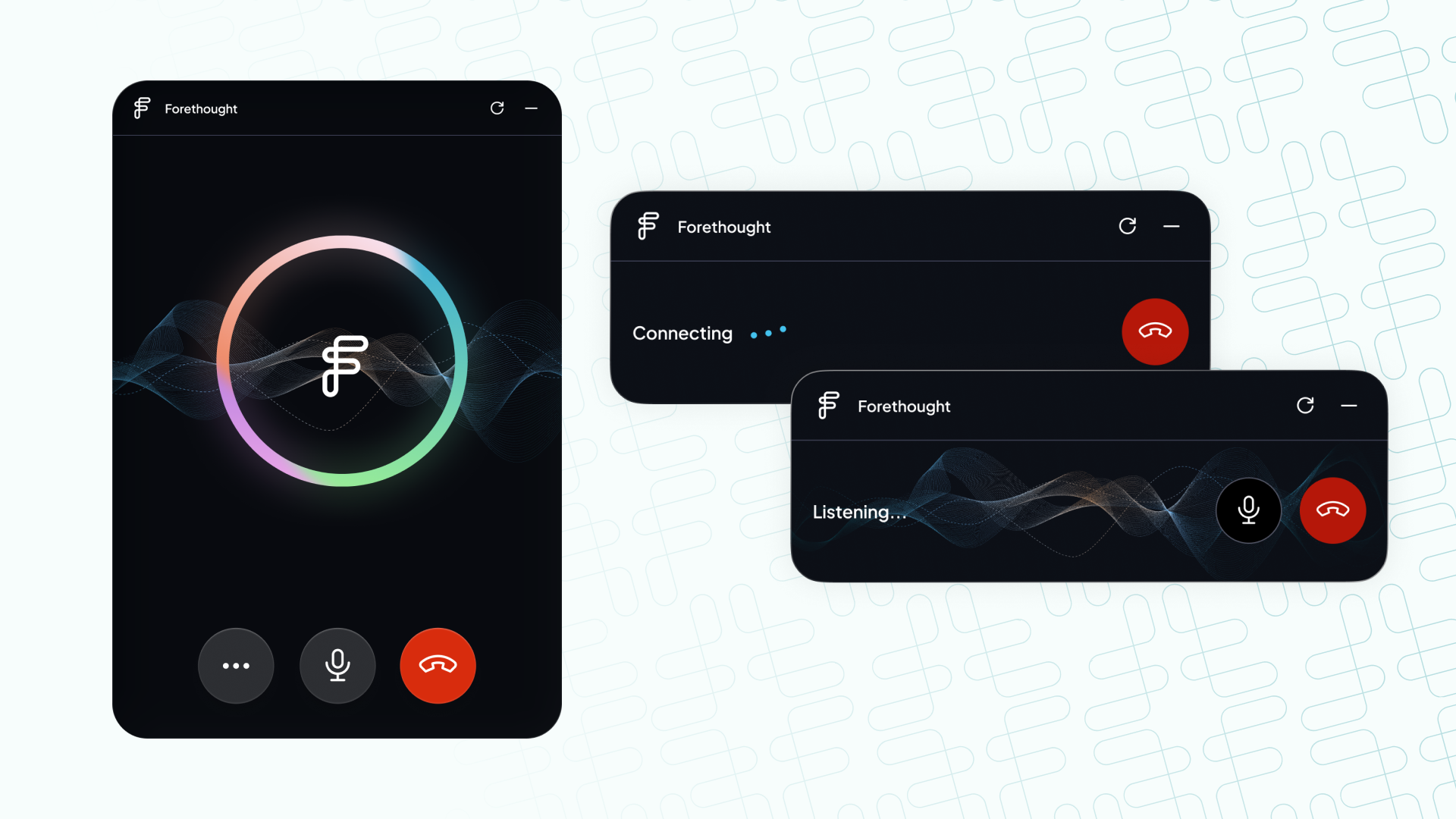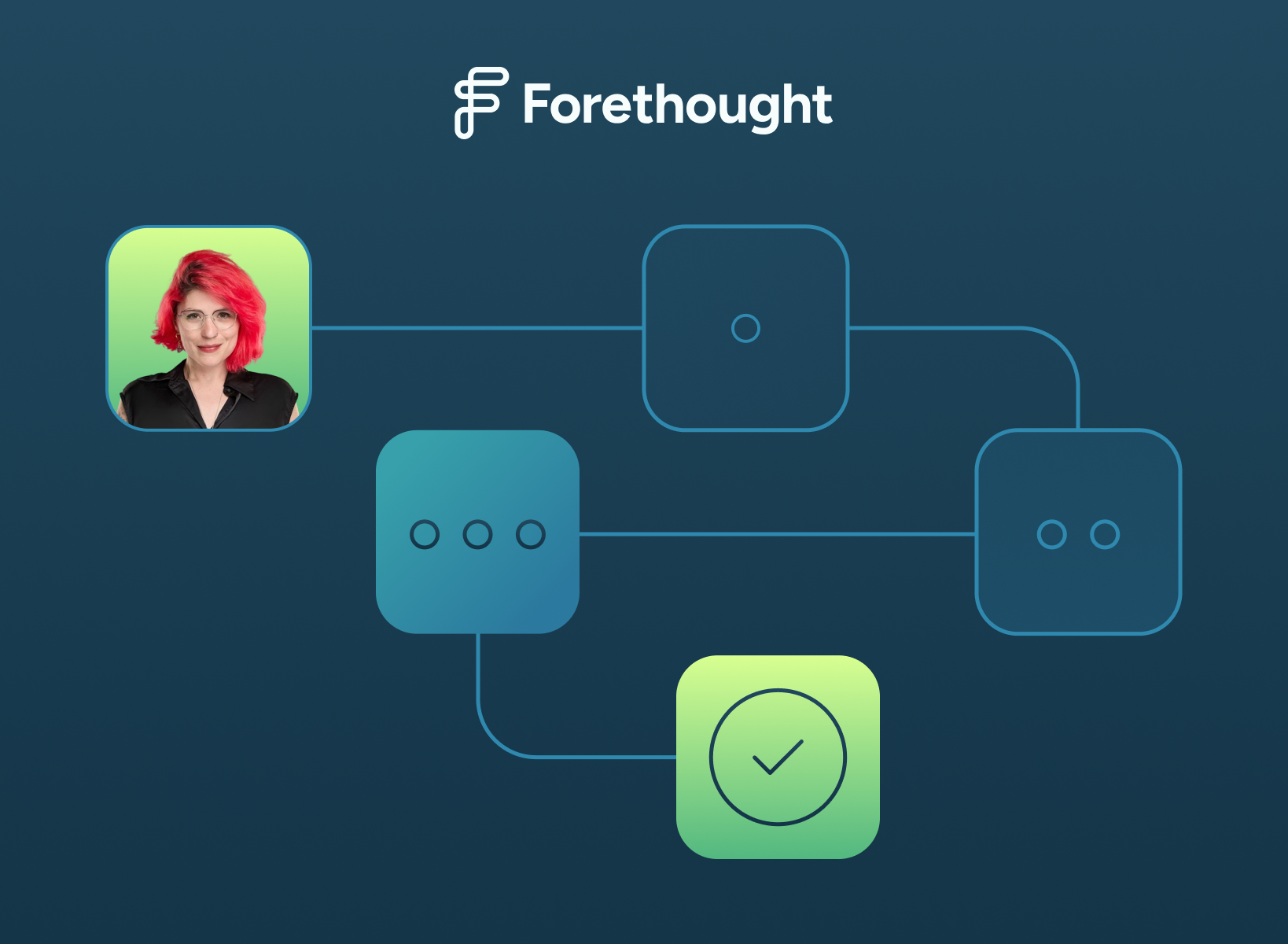When you’re running support for a company that’s growing fast, the tickets stack up. Your team answers the same questions over and over, and everyone’s doing three jobs at once. You know you can’t keep up this pace forever, but hiring isn’t simple and it isn’t cheap.
If your team has fewer than 10 agents, you’re not alone. And yet, despite having fewer resources, you’re still expected to deliver the same fast responses, personalized help, and 24/7 coverage that much larger teams offer. Historically, meeting those customer expectations has meant tradeoffs: hire and absorb the cost, or stretch your team and risk quality.
But that dynamic is changing. Small teams are starting to punch above their weight—not because they’re working harder, but because they’re working differently. Recent research shows that small teams who have adopted agentic AI are able to scale support without compromising what matters.
We’ve collected new data from CX teams across industries and company sizes, and some of the most impressive results came from the smallest groups. One small team behind a fast-growing global app used agentic AI to deflect 80% of tickets, protect CSAT, and avoid hiring even as volume surged. Their approach is specific, repeatable, and built for teams with limited resources.
Agentic AI is powerful enough to give you an edge over bigger competitors with more resources
Forethought’s 2025 AI in CX Benchmark Report collected data from over 1,000 CX professionals across industries, roles, and company sizes. One of the ways the data was analyzed was by support team size, and that lens revealed something surprising.
Agentic AI doesn’t just close the gap for small teams. It flips the power dynamic. In 2025, the smallest teams, those with just 1 to 10 agents, were delivering better support outcomes than many of their largest competitors. They were faster, operated cheaper, and their customers were more satisfied.
Small teams using agentic AI saw a 71% improvement in deflection compared to those using non-agentic tools. And they could feel the difference. When asked directly about the impact AI had on deflection, 80% of small teams rated it positive or highly positive.

These same teams reported the highest CSAT of any cohort—89%, higher than even enterprise teams with hundreds of agents. They achieved the lowest cost per resolution at just $9, compared to $18 to $23 for other groups, and 57% of small teams said AI had a positive impact on customer retention, with nearly one in five calling the impact highly positive.

Taken together, these results point to a shift: small teams aren’t just surviving. They’re staying small longer, and in some industries, they’re using agentic AI to reshape what support looks like altogether.
Imagine a startup built to help travelers book boutique hotels and eco-resorts. It’s playing in the luxury travel space; a market full of major hotel groups, white-glove agencies, and concierge apps with big teams and always-on coverage. Traditionally, those players out-service new competition with teams of multi-language agents providing personal attention, 24/7. It’s a model that demands higher headcount and a five-person team can’t compete.
Instead, this startup builds its support system around agentic AI. They use Forethought Solve to fully automate booking changes, upgrade requests, loyalty lookups, and real-time travel issues across chat and email. In addition, they implement an AI voice agent to skip the legacy IVR maze and deliver a direct, humanlike concierge experience. Lastly, they use an AI assistant to give their small team the context and history they need to jump in seamlessly when human support is needed.
Now that five-person team offers:
- White-glove service without white-glove staffing
- 24/7 multilingual support without rotating shifts
- The ability to update workflows and promos instantly without retraining
- A continuous feedback loop powered by AI data to optimize support weekly instead of quarterly
Now they’re not just keeping up with legacy players; they’re moving faster. They launch in new markets without hiring, and they grow with margins their competitors can’t match. Agentic AI has given them a durable structural advantage in industries where support used to scale only with people. That edge isn’t theoretical—it’s already happening.
Steal the agentic AI tactics small teams are already using
The teams seeing the strongest results with agentic AI aren’t just turning it on and hoping for the best. They’re making specific, intentional choices about how they implement and use it.
These decisions reflect the constraints they’re working within like limited headcount, rising volume, and the need to maintain quality without always having the option to hire. Both in our benchmark report data and our daily conversations with Forethought customers, certain tactics stand out.
1. They know the difference between AI that answers and AI that acts
Some AI tools look impressive at first. They generate friendly responses, reference help center content, and ask smart follow-up questions. But if the customer’s issue isn’t solved, the issue still ends up on an agent’s plate. To be able to punch above their weight, small CX teams need to tell the difference.
They’re not just looking for AI that can hold a conversation, they’re looking for AI that can resolve a case. That means issuing a refund, canceling an order, resending a confirmation, or updating account details without help from a human. This is what separates agentic AI from generative or RAG-based tools. The latter might suggest a help article or log details for handoff, but agentic systems are designed to complete the workflow from start to finish.
And when teams make that distinction, they tend to get more out of automation. Our benchmark report findings show that while non-agentic AI actually delivered higher reported gains in retention among small teams (21% vs. 11%), agentic AI consistently outperformed on CSAT, cost per resolution, and deflection.
2. They choose full AI platforms, not add-ons
It’s easy to add a chatbot to your help center and call it AI. A lot of teams start there, especially when it’s included as part of their helpdesk or ticketing system. These tools might answer a few basic questions or surface links to help articles, but they rarely resolve the issue, and they aren’t built to scale.
Small teams who want to scale with AI as their foundation are moving away from these lightweight add-ons and toward purpose-built platforms that handle the full resolution cycle across multiple channels, with minimal manual setup.
Our benchmark report found that dedicated AI adoption jumped 3.5x over the last year, from 14% to nearly 50% of all teams surveyed. That trend points to a shift in priorities: away from add-on features, and toward systems designed to automate actual work.
Forethought is an example of a full agentic AI solution. Our platform uses agentic AI for autonomous issue resolution across chat, email, and voice, plus Discover for insights and content improvement. Additionally, our AI assistant for human-agent support is built to act like a teammate, not a tool. For small teams, if Forethought can handle full workflows, they need fewer tools to manage, and less context is lost between systems so there are better results from day one.
3. They train AI on their own data
Generic data will only get you so far. Prewritten replies, templated FAQ language, or answers trained on public sources might sound fine on the surface, but they won’t reflect your actual workflows, policies, or customer expectations. The teams seeing real results are training AI on their own tickets, help center content, and CRM fields, so the responses match how they actually solve problems.
Our benchmark report findings show that proprietary customer support data like historical tickets and CRM records are the top data sources used to train AI models. They help small CX teams shift toward contextual automation where the AI resolves issues based on how the company actually operates, not how a template suggests it should. For small teams, this approach reduces friction. It limits the amount of manual scripting required and helps the AI learn from patterns that already exist in day-to-day operations.
The teams getting the most out of agentic AI aren’t moving fast for the sake of it. They’re choosing tools that fit their model, training them on the right data, and making sure automation does real work before expanding its role. That’s the approach YAZIO took. They built their AI strategy around resolution from the start and now, their agent handles 80% of tickets without adding headcount.
How one small team built a zero-touch support tier with AI
YAZIO’s success as a small team shows what’s possible when a small team doesn’t just add AI to their workflow, they rebuild around it. YAZIO is Germany’s leading nutrition app. As they expanded globally, their customer base surged, and so did their support volume. Their CX team, just 5 to 8 in-house agents, already handled everything: tickets, templates, help center articles, even internal documentation. Hiring fast enough to meet demand wasn’t realistic, and the lightweight AI tools they tried (like an internal search bar) weren’t solving the problem.
So they set a new goal to build a zero-touch support tier powered by agentic AI. They didn’t want another chatbot that hands tickets off, they wanted an automated agent that would resolve issues entirely. It had to be multilingual, high-empathy, and compliant with strict data requirements, especially given the mental health sensitivities around nutrition guidance.
Their rollout started with Forethought Solve, trained on YAZIO’s historical data. Solve began handling common questions and deflecting tickets in chat, escalating only complex issues like contract cancellations or third-party tech failures. The team continued to refine workflows, especially across six languages, to make sure tone, clarity, and care translated well.
CSAT rose from 3.1 to 4.0 out of 5, even as volume increased 40%. Within six months, Solve was deflecting 80% of tickets. YAZIO avoided hiring three additional agents and gave their team room to improve support resources instead of chasing volume. Now, they’re aiming for 90% deflection and planning to adopt Discover to identify and close knowledge gaps automatically.
What’s worth taking from YAZIO’s example isn’t just the outcome; it’s how they approached it. They started with one goal: resolve common questions without adding headcount. They used their own support history to train Solve, rolled it out in one channel, and refined from there. They didn’t automate everything at once—they automated what made sense, and made it work well before moving on.
If you’re planning something similar, that’s the move: pick the high-volume issues that don’t need human input, train AI on how your team actually handles them, and focus on resolution, not redirection.
Rethink what it means to scale
Most companies wait until support becomes a problem before they think about AI as a solution. They grow the team, add layers, and adopt tools in pieces. But small teams using agentic AI are doing the opposite—they’re designing support as a structural advantage from the start.
The shift doesn’t just show in productivity stats or deflection rates. It changes how these teams think. When AI doesn’t just assist agents but acts as one, small teams can move faster, focus better, and build support that keeps pace with the rest of the business. If you’re still measuring success by how many people you need to hire, you’re solving the wrong problem.
Forethought is the only agentic AI platform designed to help small CX teams do the work of much larger ones, without adding complexity. Solve handles end-to-end ticket resolution across chat, email, and voice, so repetitive issues never reach your team. Discover uses those same conversations to flag content gaps and suggest updates, so your knowledge base stays useful without manual audits. Assist and Triage work behind the scenes to give agents everything they need to respond faster, or not at all. And Voice adds a humanlike AI layer to phone support, so you can offer round-the-clock coverage without hiring night shifts.
It’s one system built to deflect tickets, improve content, support agents, and scale real resolution on your terms. If you’re building a support org that stays small by design, Forethought was built for you. Let’s talk.
Hashtags blocks for sticky navbar (visible only for admin)
{{resource-cta}}
{{resource-cta-horizontal}}
{{authors-one-in-row}}
{{authors-two-in-row}}
{{download-the-report}}
{{cs-card}}




.svg)

.svg)
.svg)

.png)



.png)





